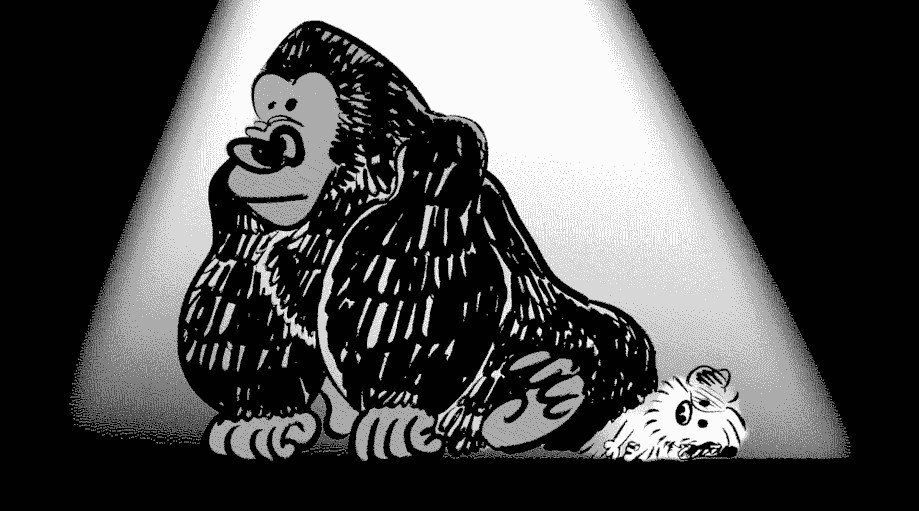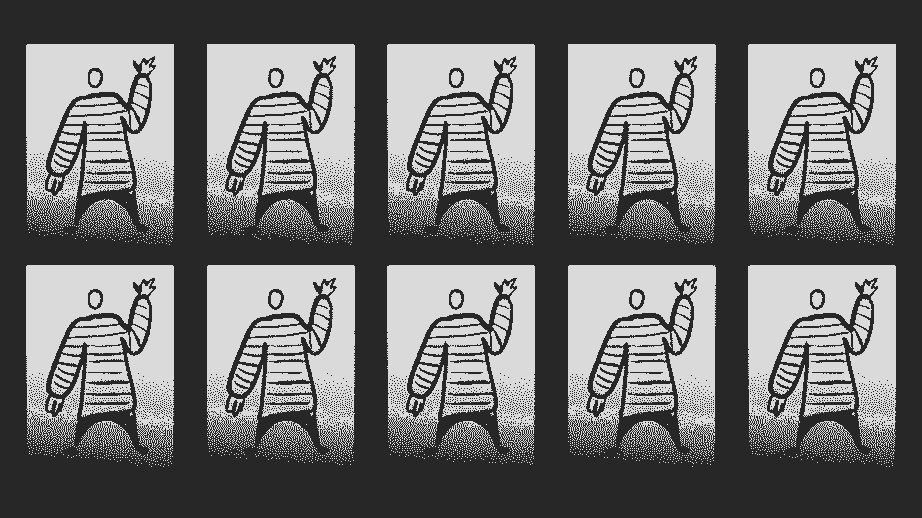It was the night before the shoot and the photographer had no good ideas. He rummaged the shelves of his studio, ripping through stacks of reference books featuring people laughing, running, jumping. The more he looked, the more muddled he became.
He took a breath and put the book down. He pushed all the reference books aside, clearing a space on his desk.
He filled a glass with water and sat down. He took a pen and slid a blank piece of paper in front of him. He closed his eyes and asked himself: what do I want to do with tomorrow’s assignment? What do I think it’s about?
That was the moment late photographer Peter Lindbergh started down his own creative path. He hated the use of moodboards, believing they fed our tendencies to copy, and was adamant we not look outside ourselves for answers about what kind of work we should make. He believed it was the only way we could draw original conclusions.
In our time of easy access to infinite references, we’re always stocking our minds full of other artists’ work, afraid of stepping out of bounds.
How do our designs, illustrations, photographs come to look like everyone else’s? How do we start to draw our own conclusions instead?
How we lose our originality
When we were kids, we drew stuff because stuff fascinated us and we could come up with wild stories that tickled us. (I went through a phase of drawing Wolverine kissing various made up heroines.)
When we grow up, we draw stuff because – clients. Because – money. Because of some ill-formed idea of “success”.
We lose our path and wake up walking someone else’s.
When we first get work in the creative industry, we’re just happy to have work. We’re ecstatic and a little paranoid it was all a fluke and we’ll never get a gig again. That doesn’t happen, of course – we end up getting more work. More clients ask us for things and we give it to them, good boys and girls that we are.
We start to pack our days with client work – some with better budgets and timelines than others. We rarely start a project without referencing a bunch of already-proven work on Behance and Dribbble. These references give us guard rails and it’s what clients want from us.
Bring me this new fresh style that I’ve never seen before, said no client ever. Clients don’t want to take risks. They want us to do something similar to what’s already been done. They’ve already scanned the landscape and determined the direction.
We get paid, the money’s fine and it’s easy enough to do what others tell us to do, isn’t it? This continues for months, years, whole careers. This is Peter Lindbergh getting assignments, flipping through his reference books, dog earing some of the pictures and going out and shooting with other photographers’ work punched into his mind.
But executing the client’s vision and looking to other artists’ work crowds out our own work. We spend longer hours polishing client work than developing our original conclusions – we don’t allow our imaginations to wander as we did as kids; now it’s focused, laser-beamed, all business and no play. It’s a dull thing.

We always pick client work over personal work
It’s hard to make time to draw our own conclusions when we don’t pursue personal projects. It’s hard to pursue personal projects when we have a bunch of client work. Or a full time job, for that matter.
We don’t pursue personal projects with as much discipline as we should, because we don’t know their shape ahead of time and we don’t want to wrestle with them in the dark to find out. Doing that would mean taking the reigns and finding out what our conclusions are, instead of following orders.
Client projects are simpler.
They give us constraints – budgets, deadlines, predetermined styles. Every deliverable is a little bump of approval – client likes it, keep going, great job. We savor the feeling of making progress toward a finite deadline.
Personal projects don’t have easy constraints. We can walk in circles, spending months noodling and researching and testing and putzing without finishing anything. There is no one at the finish line to tell us what a pleasure it was to work with us. There might not be a finish line at all.
Without doing our own investigations and drawing our own maps, we remain foggy to ourselves. We don’t have original conclusions of our own and so are always unsure of what we want from our work.
This lays us open to the rush and force of client demands.
And clients demand what’s popular. What’s already working.
They pick from a pool of reliable talent that can work in the current trends. If you live in New York, a glance at subway ads will tell you the flavor du jour are flat, pastel colors, graphic shapes paired with clean, modern fonts. If you’re an illustrator and you can work with these trends, you’re almost guaranteed to find work. That’s good for us in the short term.
It’s also good for clients, as more and more illustrators learn the language of popular trends and speak it. Now clients have their pick of hundreds of creatives who can all speak the language.
Over the long term, this means more competition between artists and a struggle to keep up with trends as we age. Having no conclusions of our own, we continue to reference other artists as we drift further away from ourselves. Our tastes are muddied. So proficient are we at referencing other people’s work we’re not sure what we like anymore.
What sets a Lindbergh aside from the average photographer is not his technical expertise but the sureness of his own conclusions – his own tastes. And that means a Lindbergh sets trends – he doesn’t follow them. Clients don’t dictate his game, he dictates theirs.
As we continue to chase popular trends, we continue to play the client’s game – not our own. We exert little control over what projects we’re “picked” for, and have little bargaining power because we don’t know much about ourselves to put forth a better vision.
How do we pay attention to and build our own creative vision? How do we put away references, social media scrolling and pull a Lindbergh?
A glass of water, a piece of paper
“You come to a point where you can really mix what you are with your work. Even if what you’re doing is brilliant but you feel like it’s not you – then it doesn’t make much sense. Then your work won’t go very far.”
—Peter Lindbergh
Without strong convictions of our own, what comes flooding into the void are endless insecurities about our own work. Oh my god, I’m starting my own project and I don’t know what to do. Let me look at some references for “inspiration”. We fill ourselves up with others’ conclusions and fail to build trust within ourselves of what we want to say.
At some point we’ll need to come back to our instincts. We’ll need to “mix” what we are with our work, because doing what is only on trend does not satisfy in the long run.
At some point, Lindbergh’s crossroads reflects our own.
We can sit with a glass of water and a piece of paper and ask ourselves: where are we going with all this work? Where do we want to take it? What are our tastes?
Based on our answers, we can act as our own client and set up personal projects with deadlines and other constraints we’ll respect. We can resolve to work toward finding our own original conclusions.
We can close out of our Pinterest and Behance tabs.
Maybe we don’t need to surround ourselves with the certainty of other people’s work to find the truth in our own.
See what comes of it.
We might surprise ourselves.
The quotes and anecdotes from this essay is based on this interview with Peter Lindbergh.

